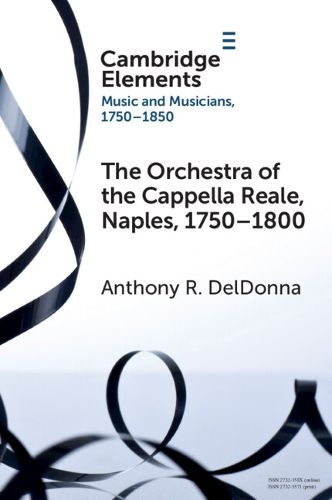Readings Newsletter
Become a Readings Member to make your shopping experience even easier.
Sign in or sign up for free!
You’re not far away from qualifying for FREE standard shipping within Australia
You’ve qualified for FREE standard shipping within Australia
The cart is loading…






The most prestigious musical ensemble of early-modern Naples remained the Royal Chapel or Cappella Reale di Palazzo. Conceived to serve directly the ruling authority of the capital city - whether the viceroy (Spanish or Austrian) or monarchs (Carlo di Borbone then Ferdinando) - membership of this elite organization offered prestige, financial security, and access to the broader networks of music culture in Naples, attracting the best musicians within and beyond the physical confines of the capital. This Element introduces readers to the largely unknown history of the Neapolitan Cappella Reale in the second half of the eighteenth century. It is based on primary sources, reconstructing the entire personnel of the ensemble (1750-1799), recovering previously unstudied contractual agreements, offering details about the personnel while also examining the original music of the principal musicians of the orchestra.
$9.00 standard shipping within Australia
FREE standard shipping within Australia for orders over $100.00
Express & International shipping calculated at checkout
The most prestigious musical ensemble of early-modern Naples remained the Royal Chapel or Cappella Reale di Palazzo. Conceived to serve directly the ruling authority of the capital city - whether the viceroy (Spanish or Austrian) or monarchs (Carlo di Borbone then Ferdinando) - membership of this elite organization offered prestige, financial security, and access to the broader networks of music culture in Naples, attracting the best musicians within and beyond the physical confines of the capital. This Element introduces readers to the largely unknown history of the Neapolitan Cappella Reale in the second half of the eighteenth century. It is based on primary sources, reconstructing the entire personnel of the ensemble (1750-1799), recovering previously unstudied contractual agreements, offering details about the personnel while also examining the original music of the principal musicians of the orchestra.